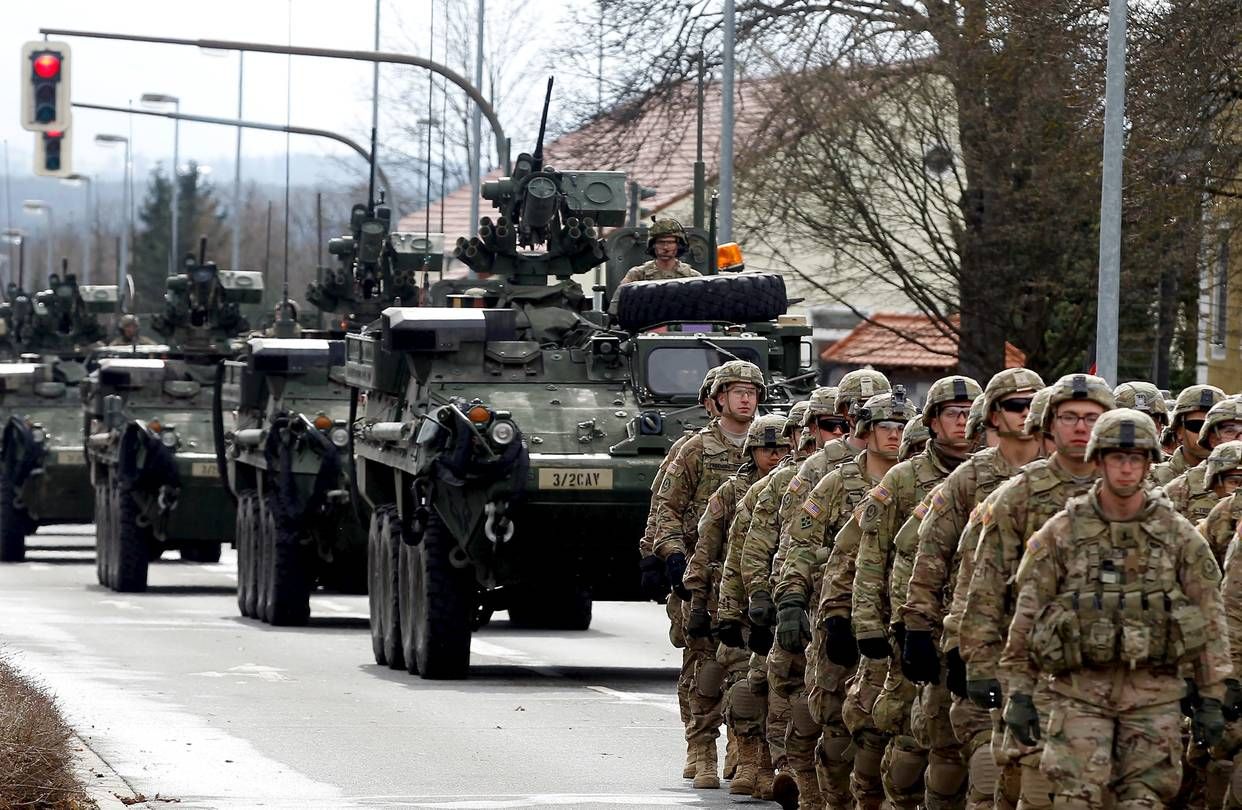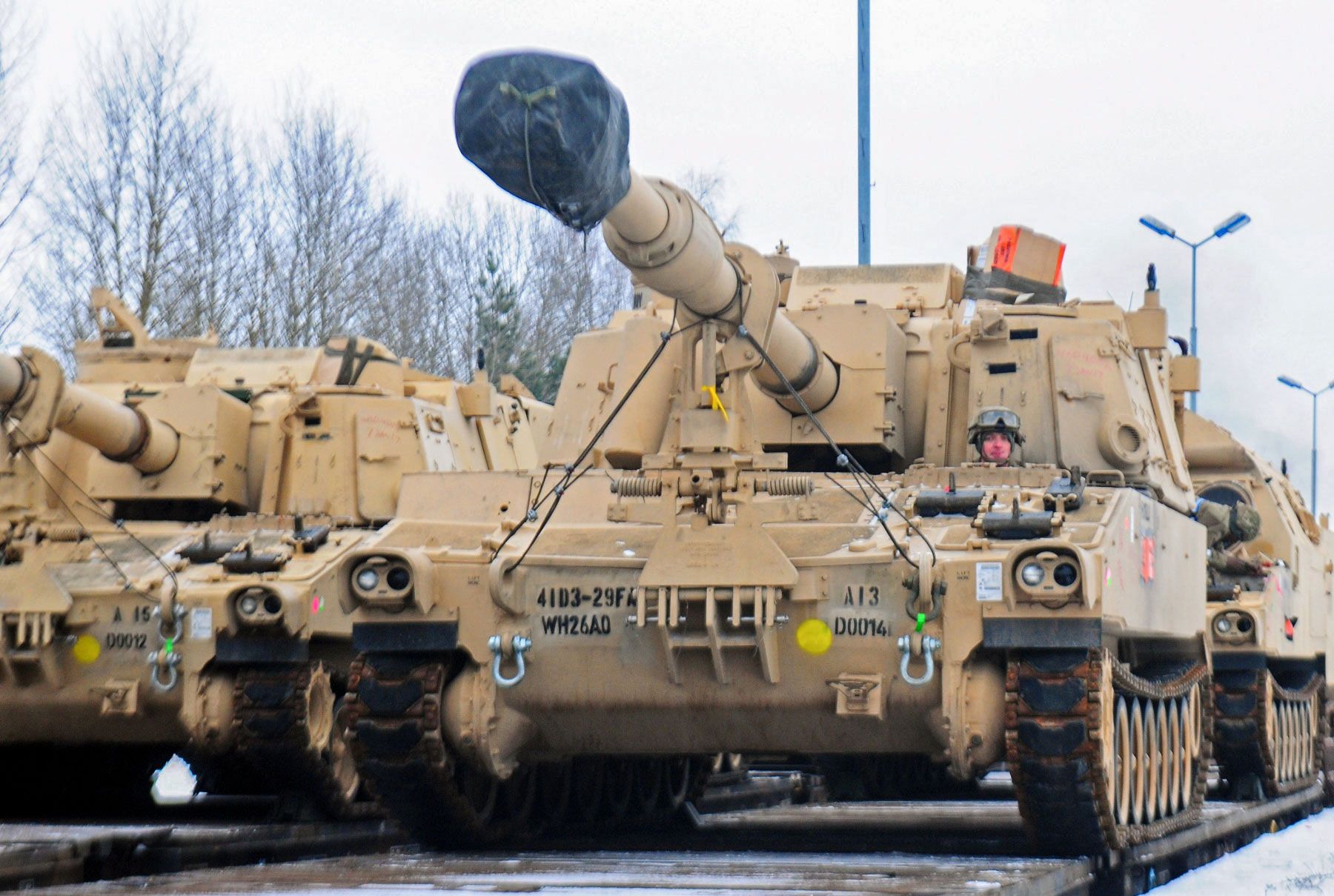US troops and tanks began streaming into Poland Thursday as part of one of the largest deployments of US forces in Europe since the Cold War, an operation that Russia angrily branded a “threat”.
The Atlantic Resolve mission will see more than 3,000 American soldiers and heavy equipment deployed in Poland and nearby NATO partners Estonia, Latvia, Lithuania, Romania, Bulgaria and Hungary on a rotational basis.
The outgoing US administration of President Barack Obama ordered the deployment of an armoured brigade to the region after 2014 to reassure eastern allies after Russia’s annexation of Crimea from Ukraine.
The operation has sparked immediate anger from Russia, with the Kremlin describing it as a “threat” on its “doorstep”.
“This is unprecedented for Poland,” Michal Baranowski, Warsaw office director of the German Marshall Fund of the United States think-tank, told AFP.
“We have not had this level of a rotational presence since the Cold War.”
Baranowski said the arrival of the US troops, along with NATO’s coming deployment of four multi-national battalion groups in Poland and the three Baltic states, “changes the security calculus on the alliance’s eastern flank” by creating a much-boosted deterrent.
“These forces will have a ‘trip wire’ function — no longer will it be possible for Russia to have a quick victory for example in the Baltic states on the cheap,” Baranowski said.
“It will not be able to have just a regional conflict because the NATO allies will automatically be affected — and that’s a very big change,” he added.
– Calm the air? –
But the operation comes a week ahead of the inauguration of US President-elect Donald Trump, who has suggested his Republican administration will seek to ease tensions with the Kremlin.
According to Stanislaw Koziej, a retired Polish brigadier general who served as national security chief from 2010-15, the arrival of the US brigade has “somewhat calmed concerns about the direction the US will go after the arrival of the new president”.
“If he really wanted to, the president-elect (Trump) could comment on the deployment, but since he hasn’t, that’s calmed the air,” Koziej said.
US troops entered Poland at the Olszyna border crossing with Germany on Thursday and headed to the brigade’s headquarters in the nearby Polish town of Zagan.
Heavy equipment, including 87 Abrams tanks and over 500 personnel carriers including military-equipped Humvees were to follow.
“This operation threatens our interests and our security,” Kremlin spokesman Dmitry Peskov said Thursday.
“This is even more pronounced when a third party (the United States) reinforces its military presence on our doorstep in Europe.”
Russian deputy foreign minister Alexei Mechkov described the deployment as a “factor destabilising European security”.
But Baranowski disagreed. “No matter how we look at it — even with full deployment of forces that was agreed at the (2016) NATO summit plus this presence of the armoured brigade combat team — Russia has overwhelming domination when it comes to force ratio” in the region, he said.
“Looking at how many forces they (Russia) have versus how many forces NATO has in the region, we’re talking about a discrepancy of ten to 15 times as many.”
Last summer, NATO leaders also endorsed plans to rotate troops into Poland and the three Baltic states to reassure them they would not be left in the lurch if Russia was tempted to repeat its 2014 Ukraine intervention.
A separate US-led battalion working within the NATO framework will be stationed near Poland’s northeast border with Russia’s Kaliningrad exclave.
Moscow has stepped up its presence in the Baltic Sea area over the last two years.
Its jets regularly violate the airspace of smaller ex-Soviet NATO allies like Estonia and in April they even buzzed a US naval destroyer.
Late last year, Poland criticised Moscow’s deployment of nuclear-capable Iskander missiles into its Kaliningrad outpost, which borders NATO members Poland and Lithuania.










